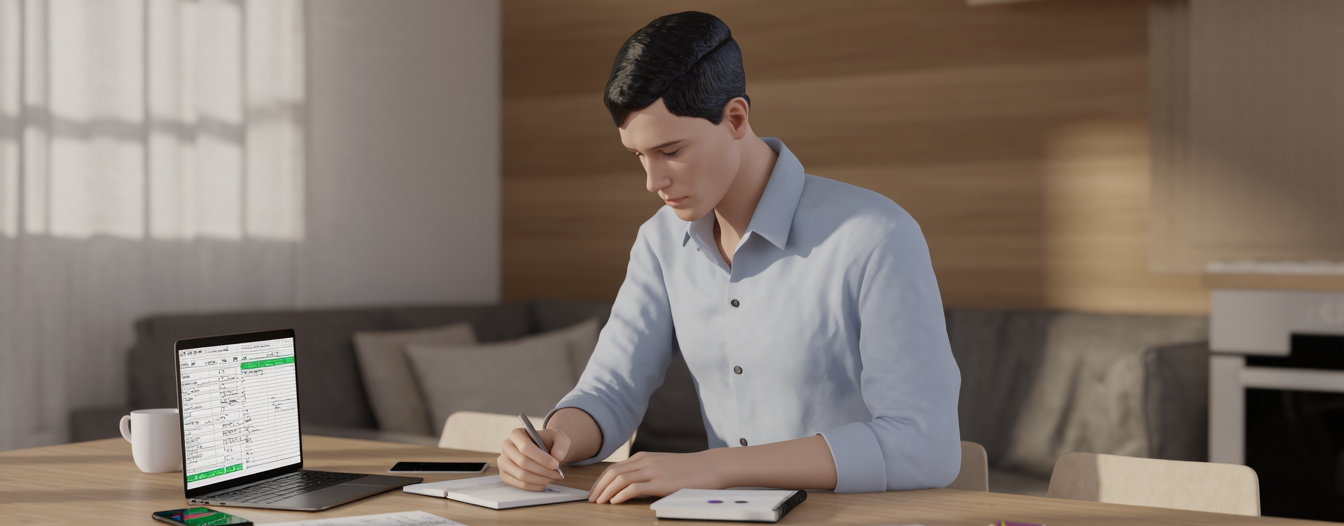Living paycheck to paycheck can feel like running on a financial treadmill—you’re working hard, but never getting ahead. No matter how much you earn, if your money disappears as soon as it arrives, it’s time to break the cycle.
The good news? With the right mindset and habits, it’s absolutely possible to stop living paycheck to paycheck and start building real financial stability.
What It Means to Live Paycheck to Paycheck
This lifestyle means that your income covers only your current expenses, with little to nothing left for savings, emergencies, or future goals. If your paycheck is delayed or an unexpected bill shows up, you’re instantly in trouble.
This isn’t just stressful—it’s risky.
Why People Get Stuck in This Cycle
Even people with decent incomes can fall into this trap. Common reasons include:
- No clear budget or spending plan
- Relying on credit for emergencies
- Lifestyle inflation (spending more as you earn more)
- High fixed expenses
- Lack of savings
- Uncontrolled debt
Breaking the cycle starts with awareness and action.
Step 1: Know Exactly Where Your Money Goes
Track every dollar for at least one month. Use a notebook, spreadsheet, or app. Categorize your spending:
- Essentials (rent, food, utilities)
- Non-essentials (subscriptions, eating out, shopping)
- Debt payments
- Irregular expenses
This gives you the full picture of where your money is going—and where it’s leaking.
Step 2: Build a Realistic Budget
A budget isn’t about restriction—it’s a plan for your money. It helps you take control and prioritize what matters.
Start with the 50/30/20 rule if you’re new:
- 50% for needs
- 30% for wants
- 20% for savings and debt repayment
Adjust it to your reality, but make sure you’re spending less than you earn.
Step 3: Cut or Reduce Unnecessary Expenses
Look for opportunities to simplify your financial life:
- Cancel unused subscriptions
- Cook more meals at home
- Find free entertainment options
- Negotiate bills (internet, phone, insurance)
- Use public transportation if possible
Every small cut adds up and frees money for savings and emergencies.
Step 4: Build a Starter Emergency Fund
You don’t need thousands to start. Aim for $500 to $1,000 as your first mini emergency fund. This protects you from falling into debt when something unexpected happens.
Keep it in a separate account, not mixed with your spending money.
Step 5: Pay Yourself First
Before spending on anything else, save a small amount from each paycheck—even if it’s just $20. Automate it so it happens without effort.
This small habit builds the muscle of saving and gradually creates breathing room in your finances.
Step 6: Find Ways to Increase Your Income
Sometimes the issue isn’t just spending—it’s income. Consider:
- Freelance work or side gigs
- Selling items you no longer use
- Asking for a raise
- Offering services (tutoring, dog walking, deliveries)
- Upskilling for better job opportunities
More income gives you more flexibility—but only if you manage it well.
Step 7: Break the Credit Card Dependency
If you’re using credit cards to cover basic expenses, you’re digging a deeper hole. Create a plan to reduce your reliance:
- Use cash or debit for daily expenses
- Set a goal to pay down your balance
- Focus on high-interest debt first
- Avoid opening new lines of credit until you’re stable
Freedom from debt = freedom from paycheck stress.
Step 8: Plan for Irregular and Annual Expenses
These are budget killers when unplanned:
- Birthdays
- Holidays
- Car repairs
- School supplies
- Taxes
Create a “sinking fund” where you save small amounts monthly for these costs, so they don’t surprise you later.
Step 9: Stay Consistent and Patient
This change won’t happen overnight. You’ll face setbacks—but consistency is more powerful than perfection.
Track your progress monthly. Celebrate small wins like:
- Avoiding overdraft fees
- Hitting your first savings goal
- Making it to payday with money left over
Final Thoughts: You Deserve Financial Breathing Room
Living paycheck to paycheck doesn’t have to be your reality forever. With small, intentional steps, you can break free from financial stress and start building the life you want.
It starts with one decision, one budget, one paycheck at a time.
